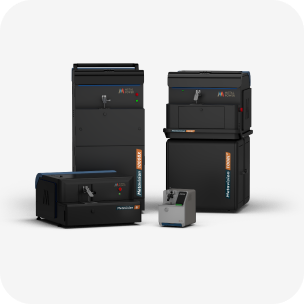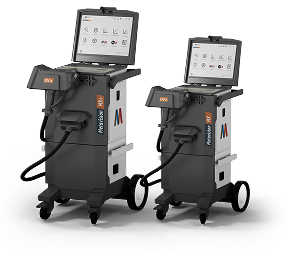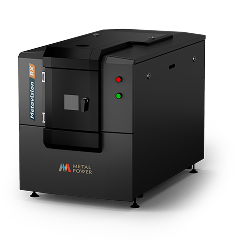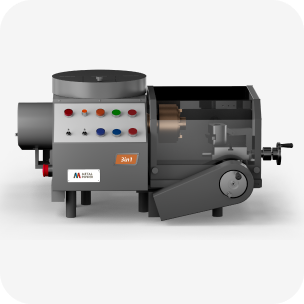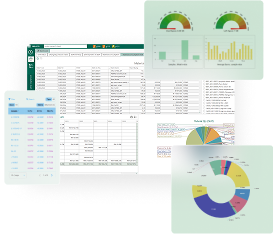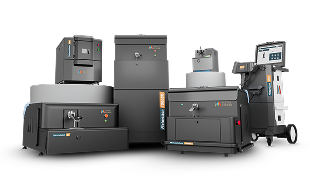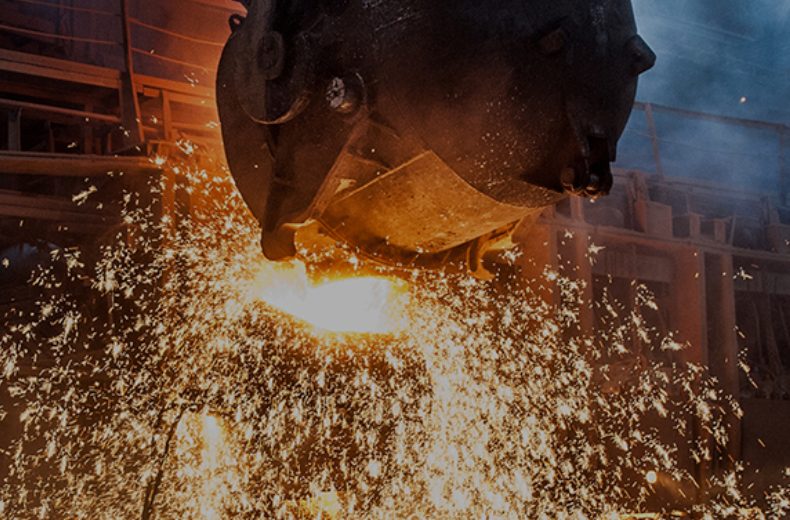CCD/CMOS vs PMT/CPMS Technology: Unveiling the Best Detector for OES Analysis

CCD/CMOS is the future of spectrometer analysis.
Optical Emission Spectrometers (OES) make use of detectors that convert incident light (optical signal) into electrical impulses that can then be measured quantitatively and compared using a database, to give the required output – the elemental concentration of the element’s being measured.
After its invention in 1930, Photomultiplier Tubes (PMTs) emerged as the detectors of choice for OES manufacturers. PMTs were seen as cutting-edge technology, as they replaced the use of photographic plates, which had been the norm until then. Using PMTs, instruments could automate measurement. PMTs rapidly took over the market and soon virtually every OES used these detectors. PMTs also improved over the decades and reached their peak by the late 1980s. Thereafter, however, as with every technology, they stagnated – and a newer, more modern technology emerged.
CCD, though invented in 1969, started being regularly used in industry only towards the end of the 1980s. The introduction of CCDs to spectrometry, indeed, marked the beginning of the end for PMT-based Spectrometers as well as a lot of other devices. However, it is only now, with the increasing maturity of the new incumbent, that the tolling of the bells has become loud and clear enough to be heard.
The Charge-Coupled Device (CCD) linear array detector technology had started seeing applications in optical fields well before, but by the 1990s, CCD technology had advanced to the point of making them viable for usage in high-precision applications like spectrometry. Given their advantages – smaller, lighter, dense number of pixels on each detector (a PMT is a single-pixel detector), CCDs offered all the advantages an R&D design engineer could ask for, apart from the highest levels of sensitivity. This, however, was improving rapidly too. By the turn of the millennium, every renowned OES maker had started evaluating CCD detectors and introducing models based on them. This pace has not slackened; CCD detectors have advanced so rapidly that they’re used in all manner of high-end applications, including space applications, imaging from satellites, etc. and of course, the high-end applications in spectrometry.
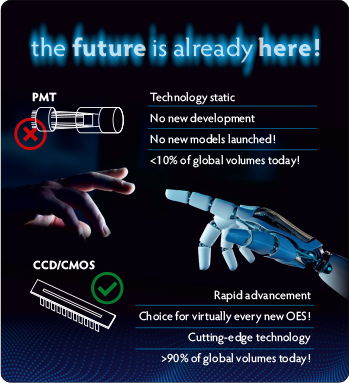
As OES manufacturers, we evaluated all manner of detectors and chose the CCD as our detector of choice. As technology evolved further, CMOS, which had previously lagged CCDs on performance despite offering cost and scalability advantages, began to gather steam. By the mid-2010s, the latest generation of CMOS detectors began to match and even better CCDs in some aspects. Compared to PMTs, these detectors were superior on just about every parameter. As leaders, we were the first to evaluate and then adopt these CMOS detectors – launching our first CMOS-equipped OES back in 2016. Our pioneering work has today been mirrored by virtually everyone else.
Today, CMOS/CCD detectors are accepted globally as the very best detectors for all manner of spectrometer applications, even – and indeed, particularly – at the very highest end.
We continue, however, to face questions from customers who carry legacy views on the benefits of PMTs – or those who fall prey to the marketing ploys of a handful of competing firms that have still not been able to optimise CMOS/CCD technology in their own instruments and therefore stick to PMT detectors. This document aims to dispel some misconceptions and educate users on the differences between the detectors and their capabilities.
PMT (Photomultiplier Tube) detectors
In simple terms, a PMT is a single-pixel detector; each PMT can therefore detect just one wavelength – the one it is specifically aligned for. A near-obsolete legacy device, the PMT is a remnant of the vacuum tube era. Each PMT captures emitted photons of light and its photocathode layer then converts these photons to electricity. Dynodes are then used to multiply this charge multi-fold, making it readable for the instrument. PMTs are of different specifications and types, and therefore prices too. PMTs used in the Deep UV section of a spectrometer, for example, are multiple times as expensive as those used in the Visible section. Channel PMTs (also called CPMs) are just another variant of PMTs that have a narrow, curved semi-conductive channel to perform the same functions as a classical dynode chain. CPMs are therefore identical in nature to PMTs and offer the same pros and cons. PMTs are, fundamentally, large (as compared to other solid-state devices), single-pixel detectors that offer excellent signal amplification and near-instant response times (given they’re analogue devices, as it were). The Pros and Cons of PMTs can be summarised as follows:
Pros of PMTs / CPMs |
Cons of PMTs / CPMs |
|---|---|
|
|
CMOS/CCD detectors
CMOS (Complementary Metal Oxide Semiconductor) and CCD (Charge-Coupled Device) detectors are solid-state detectors that convert incident photons into electrical signals. The fundamental advantage of these detectors stems from the fact that, as solid state devices, they are incredibly compact and each detector has thousands of pixels, each of which is, in effect, a detector as each pixel’s output can be individually measured. Hence, technically, a 2048-pixel detector covers 2,048 separate wavelengths. Given the extremely compact size of these detectors, therefore, a spectrometer using these detectors can cover every wavelength of light, without making the compromises that PMT detectors mandate.
The CCD was the first to emerge, and linear CCD detectors were first used in spectrometers back in the late 1980s. At this time, these were considered fit only for basic and entry-level models, given higher noise, lower speed and lower sensitivity as compared to PMT detectors. With the influx of more persons and ideas into this field, the rapid advance in solid-state devices has seen them progress and improve in leaps and bounds. By the mid-nineties, CCD detectors began to offer far better performance – and emerged on mid-range OES, even offering low-level Nitrogen analysis. By the 2010s, CCD and CMOS detectors surpassed PMT devices even in their core strengths – sensitivity, noise levels and speed. Today, the latest CCD/CMOS devices offer better performance on virtually every parameter relevant to a spectrometer. Indeed, CMOS detectors now enable even lower detection limits than PMTs and allow for all manner of top-end features, including Time-Resolved Spectroscopy (TRS), Single-Spark Analysis and a whole range of superior features and analytical upsides.
Note: While CMOS detectors have replaced CCD detectors virtually across the board, the term “CCD” remains ubiquitously used, by manufacturers and customers alike, to refer to all such solid-state devices.
Comparison of PMT OES vs CMOS/CCD OES
Output Parameters – Elements covered, detection limits, feature-set, etc.
Parameter #1 |
Elemental coverage:No. of channels/lines; Number of elements covered |
CPM / PMT Spectrometers |
A PMT OES typically offers a maximum of 40 elements as delivered to multi-calibration customers, as it runs up against the physical limitations of the PMTs themselves. A PMT is a very large, single-pixel detector. As such, each PMT can detect only one line, and therefore, a new detector needs to be added per line that needs to be analysed. As such, the number of lines is limited and restricted by the number of detectors and also space. Usually, a PMT OES has ~50 PMTs. The maximum is typically about 100 in very large units. Now, even a single element requires at least one and normally more lines to be analysed, especially as the range of analysis increases. Depending on calibrations required, a single element could require even 6-7 different wavelengths to be analysed to deliver optimal analyses. As such, even a top-end 100-PMT OES would struggle to deliver anywhere close to the elemental coverage of a mid-range CMOS/CCD OES. |
Metavision CMOS/CCD Spectrometers |
Even the most compact CMOS/CCD detectors have at least 2,048 pixels – each of which can detect a distinct wavelength. The CMOS/CCD detectors MPA use have up to 3,648 pixels (each is a ‘channel’ or ‘line’ and can be analysed); the higher-end OES use tens of CMOS/CCDs – making this tens of thousands of lines that can be analysed with ease. The most compact CMOS/CCD OES (Metal Power Analytical’s MOSS) today covers 35+ elements as standard. The top-end models like Metavision-10008X and Metavision-1008i3 offer well over 60 elements. This is entirely down to the detectors and their capabilities. All lines are covered in the working spectrum as CMOS/CCD detectors are not restricted to a single line per detector; therefore, the entire periodic table could be covered using a CMOS/CCD OES. |
Parameter #2 |
Analytical range:Lower limits for elements |
CPM / PMT Spectrometers |
PMT OES had historically been considered superior for low-level trace analysis and high-purity metals analysis. This was on account of their abilities on TRS and their high sensitivity. These advantages no longer hold, and as a result, today’s PMT OES do not match CMOS/CCD OES on detection limits. In most instances, PMT OES have inferior detection limits to their CMOS/CCD counterparts. |
Metavision CMOS/CCD
|
Advances in speed and sensitivity have led CMOS/CCD detectors to be capable of Time-Resolved Spectroscopy (TRS) and Single-spark analysis, as well as offering exceptional signal-to-noise ratios. Combined with cooled, low-temperature optics, these systems now deliver lower detection limits that are superior to PMT spectrometers. Some examples are analysis of Se, Te and Bi all down to sub-ppm levels in Pure Copper and the analysis of C, O and N down to single-ppm levels in Steels. Metavision CMOS/CCD OES today deliver pure metals analysis of 99.998%+ purity with ease, going even higher in the top-end models. |
Parameter #3 |
Wavelength Range / span |
CPM / PMT Spectrometers |
Unlike CMOS/CCD OES, PMT OES makers mention the range as representative of the range within which they can place a PMT. The range of a PMT OES does not mean that all these wavelengths are covered; merely that it may be possible to place a PMT detector within this range. While PMT OES models claim coverage of the full range, these OES have severe limitations and therefore struggle to even utilise the optimal lines, regardless of the claimed wavelength range/span. As a result, they compromise both in terms of line combinations as well as elemental coverage. |
Metavision CMOS/CCD
|
120–800 and even more. Using CMOS/CCD detectors, the entire working spectrum is covered in the specified range, and any elements that fall within it can be analysed either through factory calibration or by adding later on, including on-site. |
Parameter #4 |
Feature-set |
CPM / PMT Spectrometers |
PMT OES offer similar features in terms of soluble-insoluble analysis. Other features vary by manufacturer. |
Metavision CMOS/CCD
|
Today, Metavision CMOS/CCD OES deliver a full feature set including soluble-insoluble analysis for inclusions, melt addition programs to optimize furnace operations, automatic grade identification, automatic base/matrix identification and more. |
Parameter #5 |
Precision and accuracy |
CPM / PMT Spectrometers |
PMT detectors are large and limited to a single wavelength per detector. This results in twin issues:
As a result, PMT OES make design compromises around the inherent limitations of PMTs and give inferior performance to CMOS/CCD OES. |
Metavision CMOS/CCD
|
Metavision CMOS/CCD OES offer better performance across the range of analysis as compared with PMT OES. This is down to our ability to optimally select the line combinations and reference lines for each element across the complete spectrum. This enables the usage of far more line combinations than is possible in a PMT OES. The result is that for every element, in every part of the range, a Metavision CMOS/CCD OES optimises the lines used and therefore delivers superior performance in terms of accuracy and precision. |
Flexibility and Scalability
Parameter #1 |
Upgradeability – Addition of lines post-purchase(adding elements after installation) |
CPM / PMT Spectrometers |
Normally not possible & extremely expensive if done at all.
A detector needs to be added per line, as each PMT detector can only detect one line. Even a single-element addition requires at least one and normally more lines to be added. This requires hardware addition inside the optics. Instruments need to be sent to the manufacturer for such additions, which is very time-consuming and extremely expensive. Most users, therefore, never add any lines after the initial purchase. Beyond a certain point, line addition becomes impossible as the optics chamber can no longer accommodate more detectors. At this time, regardless of cost, the instrument can’t be upgraded. |
Metavision CMOS/CCD
|
Can be easily and economically done at the site
Requires no hardware addition and no opening up of the instrument. Low investment in terms of cost and time. MPA accomplishes these tasks entirely on-site with no shipment required. This allows users to buy only the required lines at the time of purchase, and easily and economically add more capabilities as and when required. |
Parameter #2 |
Upgradeability – Addition of programs post-purchase (adding capabilities for additional bases/matrices after installation): |
CPM / PMT Spectrometers |
It is prohibitively expensive.
Since hardware addition is needed and that too within the Optics Chamber, the instrument has to be sent back to the manufacturer for a long period of time. This is disruptive and extremely expensive. Further, it may not even be possible if the optics chamber can’t accommodate any more detectors. |
Metavision CMOS/CCD
|
Can be easily and economically done at the site
As described earlier, no hardware addition is required. As such, additional matrices, bases and elements can be added easily and economically on-site and with minimal disruption of work |
Ease of Use – Operating, daily tasks and routine maintenance
Parameter #1 |
Profiling |
CPM / PMT Spectrometers |
Needs regular profiling. |
Metavision CMOS/CCD
|
Is self/automatic profiling. |
Parameter #2 |
Warming-up time |
CPM / PMT Spectrometers |
Takes several hours (some models even take a full day from a cold start). |
Metavision CMOS/CCD
|
Within 45 minutes from a cold start, top-end models can take as little as 15 minutes |
Parameter #3 |
Analysis times |
CPM / PMT Spectrometers |
PMT OES typically take longer to deliver results. Analysis times range from 30 to 60 seconds for most PMT models |
Metavision CMOS/CCD
|
Metavision CMOS/CCD OES leverages the strengths of solid-state devices and delivers rapid analysis results within 10 seconds for the needs of high-throughput users. For routine requirements across models, the analysis time ranges (based on application) from 10 to 20 seconds. |
Parameter #4 |
Stability |
CPM / PMT Spectrometers |
PMT OES typically require far more frequent re-standardisation. |
Metavision CMOS/CCD
|
Metavision CMOS/CCD OES are remarkably stable over extended periods of time, lasting for several days without the need for re-standardisation. |
Parameter #5 |
Re-standardisation |
CPM / PMT Spectrometers |
PMT OES typically offer only multi-point re-standardisation; this is on account of these being extremely dated instruments, rather than their being limited by the PMT detectors themselves. |
Metavision CMOS/CCD
|
Metavision CMOS/CCD OES offers the facility of single-sample re-standardisation, which saves users a lot of time. However, users who still wish for multi-point re-standardisation can also use this facility. |
Parameter #6 |
Size |
CPM / PMT Spectrometers |
It is comparatively far larger; even the smaller, low-spec and low-end PMT OES are significantly larger than the larger CMOS/CCD OES models, as they use large detectors and require large optics and mechanical setups to house all the components, as well as the vacuum pump. |
Metavision CMOS/CCD
|
Even the largest Metavision CMOS/CCD OES, which are floor-standing, are far more compact than any PMT OES, given that they do not require any vacuum pump, and also they have far more compact optics, given the compact nature of the CMOS/CCD detectors. |
Lifetime Costs and Risks
Parameter #1 |
Acquisition costs |
CPM / PMT Spectrometers |
PMT OES are always more expensive than any comparable CMOS/CCD model. These models require more detectors, more electronics and of course the vacuum system and larger optics – all of which contribute to these models being substantially more expensive than any CMOS/CCD OES. |
Metavision CMOS/CCD
|
Metavision CMOS/CCD OES offer exceptional economy in every class. From offering Oxygen (10 ppm) and soluble-insoluble analysis, etc., in mid-range models to the top-end, which offer single-ppm limits for O, C, N and more, Metavision CMOS/CCD OES offer exceptional economical value. Furthermore, these are uniformly far more economical than any PMT OES. |
Parameter #2 |
Electricity consumption |
CPM / PMT Spectrometers |
Typical PMT OES consume over 2 KW as they are much more power-hungry and cost a lot more to maintain. |
Metavision CMOS/CCD
|
CMOS/CCD OES are very economical. For example, Metavision OES consume just 50 W in standby and 120 W during analyses. |
Parameter #3 |
Risk – caused by Vacuum Pump |
CPM / PMT Spectrometers |
PMT OES need a high vacuum pump. This is deleterious for the optics, as in the case of oil suck-back, the optics get destroyed. This also increases space requirement, electricity consumption and maintenance costs (oil, etc.) |
Metavision CMOS/CCD
|
CMOS/CCD OES do not need a vacuum pump. They use sealed Argon-filled optics and are, therefore, risk-free. |
Parameter #4 |
Expense on spares |
CPM / PMT Spectrometers |
PMT detectors are more prone to failure, requiring replacement. PMTs are expensive – especially UV region PMTs. Added to this, there is the vacuum pump, which has a far shorter life than the OES itself. As such, PMT OES incur a lot more maintenance expense than their CMOS/CCD counterparts. |
Metavision CMOS/CCD
|
Very little; in fact, negligible. CMOS/CCD detectors are used in all manner of applications, from space probes to spectrometers and then several more. Furthermore, these detectors (in a Metavision OES) are inside sealed optical systems. As a result, these detectors virtually never require any replacement or repair, reducing spares expenses to being very nominal. |
Parameter #5 |
Obsolescence |
CPM / PMT Spectrometers |
PMTs are getting obsolete; CMOS/CCDs are the present and future of OES. Just 2-3 firms globally continue on PMTs, and each of them has attempted CMOS/CCD models in the last 5 years. PMTs have reached the end of the technology lifecycle, and buyers of PMT OES now risk the substantial downsides of technology obsolescence. This is compounded by the fact that OES last for decades! Maintenance of an already expensive product post-obsolescence is a massive risk that compounds the issues of buying a more expensive and yet lower-performance product to start with. |
Metavision CMOS/CCD
|
CMOS/CCD technology is a core research area, and performance levels are continuing to improve rapidly. As such, CMOS/CCD detectors are here to stay and in no danger of obsolescence for several decades. Indeed, this is why all new OES models are CMOS/CCD-based. |
